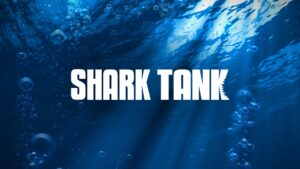Are you a Canadian that is looking to acquire a business loan? As a business banker, I’ve lent out millions of dollars to Canadians in many different provinces. Many of my clients had no idea about what was required when applying for a business loan. This article will explain everything you need to know about applying for a business loan in Canada.
What is the purpose of a business loan?
A business loan can be a useful tool for entrepreneurs and business owners who need additional funding to start, grow, or sustain their business. It can provide access to capital to cover startup costs, expand operations, purchase inventory or supplies, manage cash flow, refinance debt, or invest in marketing and advertising. By securing a business loan, you can access the funds needed to achieve your business goals and take advantage of growth opportunities, without having to sacrifice equity or control in your company. Overall, a business loan can help you to achieve your vision for your business and secure its future success.
Prepare a business plan and financial projections
Preparing a business plan involves researching, analyzing, and outlining the key components of your business, including your mission statement, target market, competition, marketing strategy, operations plan, financial projections, and management team. Your plan should demonstrate a clear understanding of your business’s goals, objectives, and potential risks, as well as a comprehensive roadmap for achieving success. To create a successful plan, it’s important to conduct thorough research, engage with stakeholders, and seek feedback from industry experts and potential investors. Ultimately, your plan should be concise, compelling, and tailored to the specific needs of your business.
You can download a free business plan template from Business Development Canada here: Free Business Plan Template
You can download a free cash flow projections template from Futurpreneur Canada here: Free Cash Flow Template
Gather your financial documents
Most lenders and financial institutions will require at least two years of personal income history as well as business financial statements if you are an existing business. If you are a new business you will need to provide your personal income history as well as your personal net worth. Your history of earning income as well as the assets you have accumulated offer support to your overall credit worthiness Be prepared to provide the following documents:
- Last 2 years personal notice’s of assessment. A personal notice of assessment is provided at the end of each tax year by the Canadian Revenue Agency indicating the amount of taxable income an individual had earned that year. For help on how to acquire your personal notice of assessment visit: Canada Revenue Agency
- Last 2 years of business financial statements including income statement and balance sheet. These financials should be prepared by a chartered professional accountant (CPA) in order to be deemed acceptable by a lender. Ask your accountant for a copy of your financial statements if you do not have them on hand. If your business has been operating for less than 1 year and you do not have accountant prepared financials then you should provide the lender with interim statements indicating your year-to-date income statement and balance sheet. These reports can be generated with your bookkeeping software such as Quickbooks or Xero. Note that interim statements are not accountant prepared and the lender will consider this as a risk.
- A statement of personal net worth indicating what assets you own and what liabilities you owe. Your financial institution or lender will likely provide you with a blank template in order to self declare your assets and liabilities. Keep in mind any assets declared you will be asked to show proof the assets exist if they are with another bank or financial institution. Also note that any liabilities that you miss on the application will be found when the institution runs a credit check on you. All liabilities under your personal name will show up on this report and your lender may ask about them if you did not declare the liability on your personal net worth statement.
Once you’ve provided all of the information listed. Your lender will assess this information and determine the amount of credit they can lend you based on your financial position. The greater your income and net worth the more credit you may be eligible for.
Understanding security and collateral
Lenders will always look for assets to secure a credit facility to minimize their risk. If you are purchasing a building, equipment or a vehicle then the underlying asset is securing the loan or at least a portion of it. For example, If you are buying a commercial building for $250,000 then the lender will often take 1st position on the building for security. This means that if you were to default on the loan payments then the bank can sell the commercial building to recover their losses. If you’re purchasing a vehicle or equipment, they may factor in a percentage of the underlying asset value as vehicle and equipment assets tend to depreciate quickly.
In other cases, there may not be any underlying security if an asset is not being purchased. For example, businesses may apply for unsecured credit such as an operating capital injection, line of credit or inventory purchase. Let’s say you are looking to apply for a $50,000 loan to acquire inventory to stock your retail store. Lenders often do not consider inventory as an asset in regards to security. Therefore your $50,000 is unsecured which is considered high risk in the lenders perspective. This risk can be mitigated by having a sufficient personal net worth to provide fallback security in the event of default. Let’s assume in this case the borrower has the following assets: $100,000 in home equity, $20,000 in savings and a vehicle valued at $15,000. The borrower has a positive net worth of $135,000 which provides more than enough security if the $50,000 loan was unable to be paid from business operations.
If the borrower did not have any personal assets then then the borrowers net worth would be -$50,000 upon taking on the new debt and the loan would most likely be denied due to lack of security. At this point the borrower could look into bringing on a personal guarantor otherwise known as a cosigner who can offer additional income and security to support the deal.
Choosing a lender
There are a variety of options when acquiring business loans and credit in Canada, including banks, credit unions and alternative lenders. It’s important to shop around and compare the terms, fees, and interest rates of different lenders.
The top Canadian financial institutions include:
- Royal Bank of Canada (RBC)
- Toronto-Dominion Bank (TD Bank)
- Bank of Montreal (BMO)
- Canadian Imperial Bank of Commerce (CIBC)
- Scotiabank
- National Bank of Canada
Alternatively, there are lenders such as Business Development Canada and Futurpreneur Canada that will provide collateral free financing in order to get your business up and running. Business Development Canada is a government owned organization which provides more flexibility and leniency for entrepreneurs just starting out or who are new to Canada. Bear in mind the interest rates may be slightly higher as the lender is taking on more risk.





